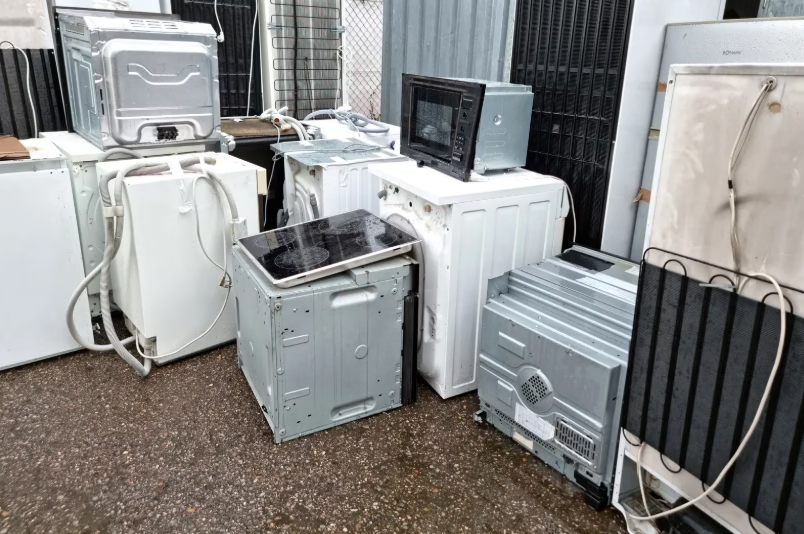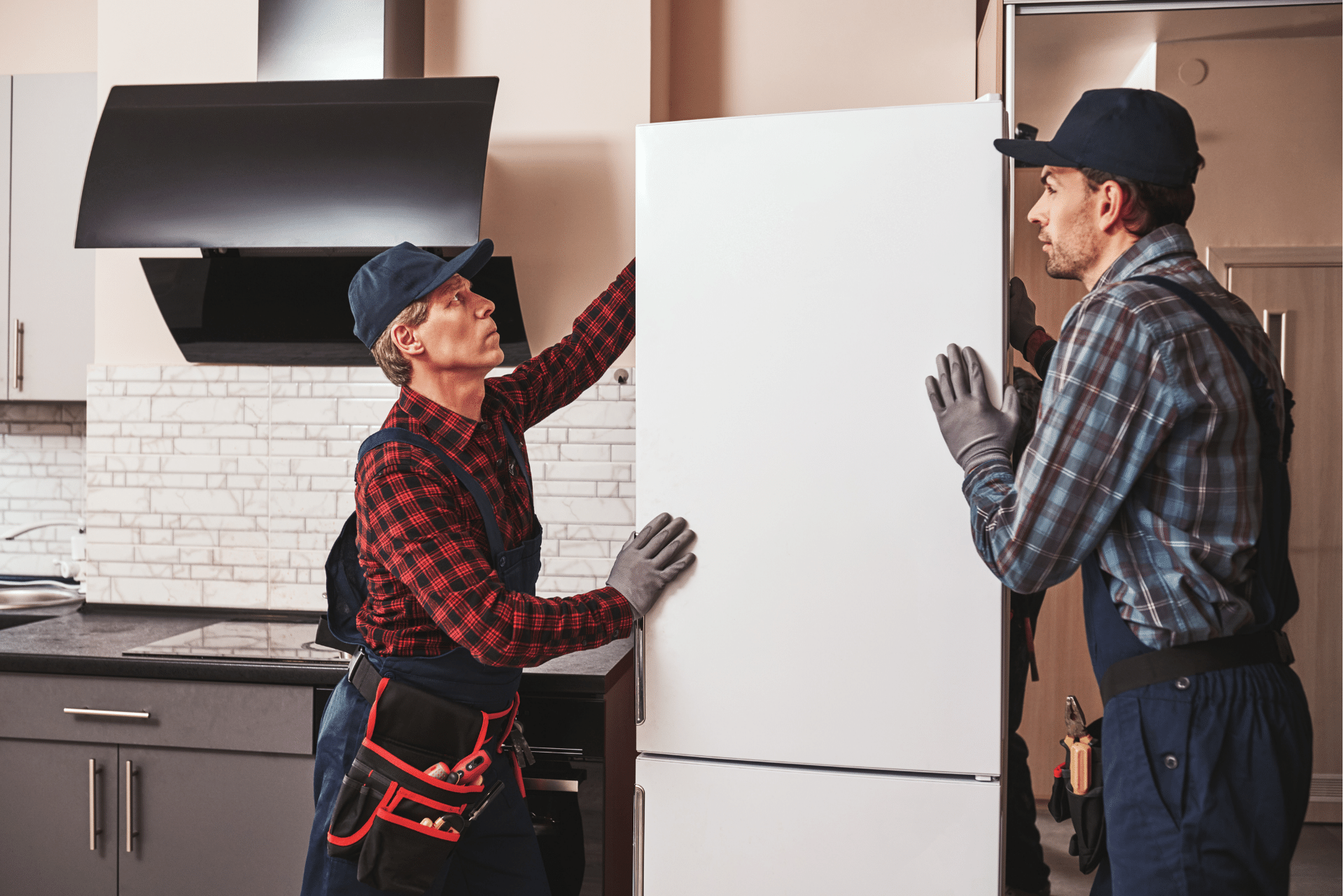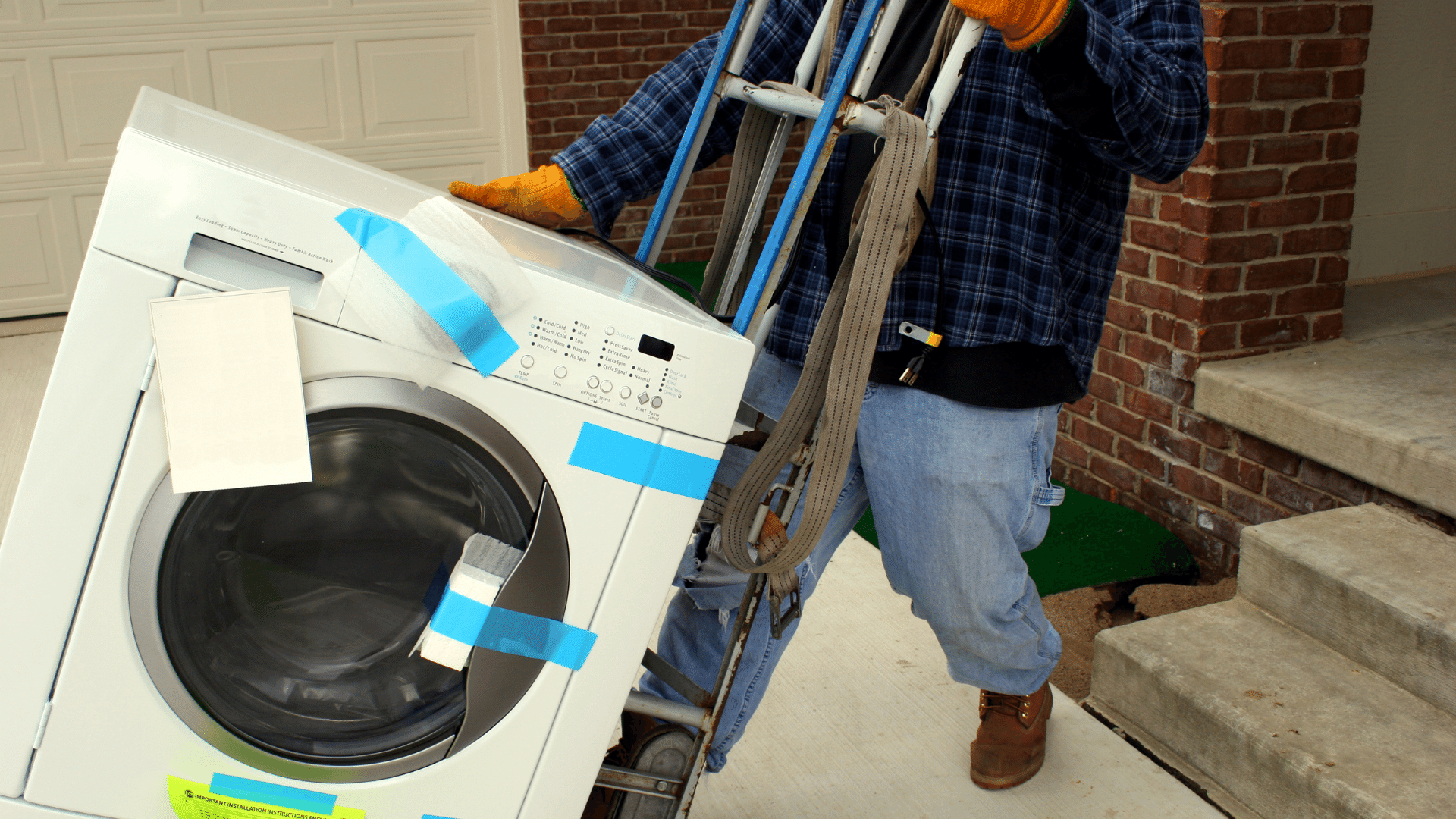Appliance Removal Made Easy Today
When it comes to freeing your space from unwanted appliances, efficient services ensure a seamless process. Appliance disposal specialists handle heavy items with care, providing solutions for every need.
Offering refrigerator pickup and washing machine haul services, these professionals simplify the removal experience.
Homeowners gain peace of mind, knowing that expert knowledge is at work for safe and effective disposal.
Reliable junk removal options significantly reduce the risk of injury and property damage. Old appliance recycling helps mitigate landfill waste, promoting a sustainable approach.
By opting for electronic waste collection, individuals contribute to responsible management of discarded technology. Securing professional assistance guarantees a hassle-free experience, streamlining the entire journey from pickup to disposal.
Understanding Appliance Disposal Options

Effective management of outdated appliances requires homeowners to explore various disposal avenues. Engaging in responsible removal practices ensures preservation of environmental health.
Options available include the following:.
-
- Donation: Functional items can provide value to others in need, fostering community support.
-
- Recycling services: Ecofriendly removal methods guarantee proper repurposing of materials, minimizing landfill waste.
-
- Local charities: Many accept appliances, aiding both the community and the environment through reuse.
-
- Professional services: For bulky item disposal, experts streamline the process, eliminating hassle for homeowners.
Before making decisions, assess your appliances and consider local regulations for proper disposal. Choosing methods that prioritize compliance and sustainability keeps your household junk management responsible. This paves the way for a smoother transition to what to expect from junk removal services.
What To Expect From Junk Removal
Effective removal solutions provide an efficient way to eliminate clutter from your space. Appliance removal services begin with an assessment of the items needing disposal services.
Next, scheduling a pickup time is essential for your convenience.
Identifying the specific types of appliances can streamline the process before you book a service.
-
- Awareness of local regulations helps ensure compliant disposal methods.
-
- Donation options for gently used appliances can benefit others and reduce waste.
Recycling efforts and repurposing practices support sustainability by minimizing landfill contributions.
Hiring professionals for furniture removal enhances safety, increases efficiency, and can save on disposal fees.
How Refrigerator Pickup Works
Understanding the process that leads to effective refrigerator disposal can greatly benefit homeowners looking to remove unwanted appliances. A straightforward removal service begins when customers schedule pickups through accessible online platforms.
Each appointment requires vital preparation steps to facilitate safe disposal, such as clearing out and positioning the appliance for easy access.
Trained professionals are equipped to handle these bulky units with care, ensuring adherence to safety protocols that minimize risks during transport.
Environmental responsibility is upheld through eco-friendly practices aimed at recycling and proper hazardous waste management.
-
- Local regulations: Familiarity with these can enhance removal service efficiency.
-
- Specialized equipment: Utilization of this ensures effective handling of bulky appliances like refrigerators.
Efficient hazardous waste management plays a role in safe disposal, guaranteeing minimal environmental impact. With proper planning, the refrigerator pickup process leads to a hassle-free experience for those seeking to declutter their space efficiently.
Best Practices For Washing Machine Haul
Successfully managing the removal of large appliances involves strategic planning for safety and efficiency. Safety precautions and detailed planning are necessary.
-
- Disconnect and drain the washing machine to prevent leaks and injuries during removal.
-
- Use gloves and protective gear to ensure personal safety, especially when handling heavy appliances.
Effective transport techniques improve the overall removal process. Utilize a dolly or appliance cart to maneuver through stairs and tight spaces successfully.
-
- Secure the machine properly during transport to avoid damage to the appliance or vehicle.
Consider disposal and recycling options thoroughly. Investigate local regulations for responsible disposal methods, which may include donated appliances or recycling facilities.
-
- Explore eco-friendly disposal practices that minimize landfill impact and promote sustainability.
Common questions arise regarding legal requirements for appliance disposal. What are the regulations for disposing of old appliances in my area?
-
- How can I ensure my washing machine is recycled properly to benefit the environment?
Following these best practices guarantees a safe and efficient appliance haul. After addressing the removal process, it’s important to recognize the benefits of recycling old appliances, which will be discussed next.
Appliance Removal and Recycling
-
- Improper removal of appliances can lead to injuries, with over 50,000 appliance-related injuries reported annually in the U. S.
-
- Using a dolly or appliance cart can reduce the risk of back injuries by up to 80% during heavy lifting.
-
- Approximately 9 million appliances are recycled each year, contributing to significant resource conservation and reducing landfill waste.
-
- Many local governments offer incentives for recycling appliances, promoting eco-friendly disposal practices that can benefit the community.
Old Appliance Recycling Benefits
Properly disposing of appliances can significantly enhance environmental wellness. Environmental advantages include conserving resources and minimizing pollution.
Effective recycling methods also provide energy savings.
Removal pricing can be more affordable when choosing recycling over disposal.
Many communities offer free pickup for old appliances, making the process accessible. Major disposal efforts contribute to a healthier planet, while also benefiting local economies.
Materials salvaged from old appliances can be reused in new products, further promoting sustainability. These collection benefits ensure responsible appliance management and eco-friendly practices.
Recycling programs at a community level encourage active participation.
Donation centers often accept functioning appliances, extending their life cycle.
Accessing free pickup services adds convenience for homeowners looking to declutter.
Awareness of dismantling options for outdated devices is crucial for minimizing landfill contributions.
Local facilities often promote eco-friendly methods for appliance disposal, linking to larger environmental goals. Utilizing these resources strengthens community ties and fosters sustainable living practices.
Engaging with disposal services ensures adherence to regulations pertaining to electronic waste.
The collection of scrap materials not only creates economic opportunities but also emphasizes the importance of responsible behaviors. Collaboration with local donation centers supports families in need while reducing waste overall.
Exploring Electronic Waste Collection Services
Effective management of discarded electronic devices contributes significantly to environmental health. Exploring options for appliance removal is essential for homeowners, especially when facing legal regulations and eco-friendly practices.
Many individuals encounter difficulty when attempting to dispose of old electronics, highlighting the importance of cooperation with local removal companies.
Such services can facilitate the clearance pricing process while ensuring compliance with environmental standards.
Identifying a reliable collection service can streamline the recycling center process, making it easier to dispose of items like dishwashers responsibly. This leads to more favorable impacts on both personal spaces and local ecosystems.
-
- Understanding Electronic Waste
-
- Definition of electronic waste and its impact on the environment.
-
- Common types of electronic items collected and their disposal challenges.
-
- Understanding Electronic Waste
-
- Local Collection Services
-
- Overview of available services in your area for effective disposal.
-
- Key factors to consider when choosing a removal company, such as eco-friendliness.
-
- Local Collection Services
-
- Benefits of Using Collection Services
-
- Convenience of having professionals handle unwanted electronics.
-
- Positive effects on the environment and compliance with regulations.
-
- Benefits of Using Collection Services
-
- Questions to Consider
-
- What happens to collected electronics after removal?
-
- Are there costs associated with electronic waste collection?
-
- Questions to Consider
Electronic Waste Management
-
- Approximately 50 million metric tons of electronic waste are generated globally each year.
-
- Only 20% of electronic waste is formally recycled, with the rest often ending up in landfills.
-
- Improper disposal of electronic devices can lead to toxic substances leaching into the environment.
-
- Utilizing local collection services can significantly reduce the carbon footprint associated with electronic waste disposal.
How To Prepare For Home Clearance
Preparation plays a significant role in achieving successful home clearance. Evaluate your living space to identify outdated appliances and other unnecessary items requiring removal.
Begin by sorting belongings into clear categories such as keep, donate, and discard for better organization.
Schedule a reliable pickup service to manage large items needing special attention.
Familiarize yourself with the logistics of your home, including measurements and access points, which will greatly aid the removal team. Prepare for transportation by clearing pathways to ensure quick and efficient access.
Research disposal solutions, including potential recycling options and associated recycling fees, to guarantee responsible disposal of your unwanted items.
-
- Organize belongings for a more efficient clearance, enhancing the pickup service process.
-
- Consider a donation program for usable items, promoting sustainability.
-
- Collaborate with professionals for a smoother removal experience, reducing stress.
What Affects Removal Pricing For Appliances
Pricing for appliance removal can fluctuate significantly based on multiple pivotal factors. Condition of the appliance plays a noteworthy role; units still operational typically incur lower fees because of their resale potential.
Type of appliance also influences costs, with larger units necessitating higher expenses due to increased logistics and labor.
Transfer services and local regulations affect disposal fees as well, creating a flexible pricing structure.
Distance to disposal sites further impacts overall costs, making location a major factor. Donation logistics need consideration, as some programs offer complimentary removal for items in acceptable condition.
-
- Local Regulations: These can dictate additional fees or requirements for kitchen removal.
-
- Transportation Costs: The farther the distance to utility disposal sites, the higher the total price may be.
Considering these factors is beneficial for making informed choices regarding appliance removal.





